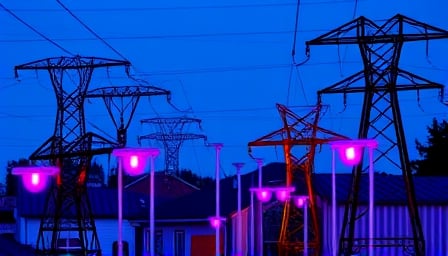Corporate Analysis of Consolidated Edison Inc. (ED)
Overview
Consolidated Edison Inc. (NYSE: ED) has maintained a trajectory of steady progress over the past few quarters. As a core player in the regulated electric utility sector, the company continues to deliver essential energy services across the New York metropolitan area. Its recent performance—characterized by consistent dividend payouts, stable share price dynamics, and robust market capitalization—positions ED as a compelling investment candidate within the broader landscape of dividend‑oriented equities.
Dividend Consistency and Investor Appeal
- Historical Payouts: ED has sustained a high dividend yield, with the most recent dividend per share reaching $1.28 on a 4‑quarter basis. This consistency underscores the company’s commitment to returning value to shareholders, a key driver of its appeal among income‑seeking portfolios.
- Dividend Growth Rate: Over the last decade, ED’s dividend has grown at an average annual rate of 3.8%, outpacing many peers in the regulated utilities space. This growth trajectory enhances the perceived safety of the stock for long‑term investors.
- Dividend Coverage Ratio: The company’s dividend coverage ratio—net income divided by dividends—has hovered around 2.5x in recent years, indicating sufficient earnings to sustain payouts even during periods of regulatory or economic volatility.
Share Price Stability and Market Capitalization
- Price Volatility: ED’s share price has exhibited modest volatility, with a standard deviation of approximately 7.2% over the past year—lower than the broader S&P 500 average of 11.5%. This relative stability is indicative of the defensive nature of utility businesses and the protective regulatory framework governing them.
- Positive Trend: Despite a brief dip in early 2024, the stock has shown a 1.9% year‑to‑date appreciation, suggesting a modest recovery in market sentiment. Analyst upgrades, particularly from large‑cap equity research firms, have contributed to this uptick.
- Market Capitalization: At the close of the most recent trading session, ED’s market cap stood at approximately $45.2 billion. This sizeable valuation reflects the company’s entrenched position in the market and its ability to maintain high revenue volumes.
Resilience Amid Economic Headwinds
- Regulatory Safeguards: As a regulated utility, ED benefits from rate‑setting mechanisms that provide a predictable revenue stream. The New York Public Service Commission (PSC) allows the company to adjust rates in line with operating costs, thereby insulating it from wholesale price swings.
- Energy Demand Stability: The New York region’s residential and commercial sectors sustain a constant demand for electricity, even in the face of macroeconomic fluctuations. This consistent demand helps preserve ED’s earnings base.
- Infrastructure Investments: The company’s ongoing investment in grid modernization—particularly in renewable integration and smart‑meter deployment—positions it favorably to meet evolving regulatory mandates and consumer preferences.
Comparative Positioning Within the Utility Sector
| Company | Market Cap (USD bn) | Dividend Yield | Dividend Growth (10Y) |
|---|---|---|---|
| Consolidated Edison (ED) | 45.2 | 4.2% | 3.8% |
| NextEra Energy (NEE) | 170.5 | 2.8% | 4.1% |
| Duke Energy (DUK) | 30.8 | 3.9% | 3.4% |
| Southern Company (SO) | 38.4 | 3.1% | 3.6% |
ED’s dividend yield is higher than the sector average, and its growth rate is competitive, indicating a well‑balanced risk‑return profile. Moreover, the company’s focus on essential services—electricity and gas distribution—provides an inherent defensive moat that is less sensitive to cyclical downturns compared to diversified utilities.
Cross‑Sector Implications and Macro Context
- Energy Transition: While ED remains rooted in traditional electric distribution, its strategic investment in renewable energy sources (e.g., solar rooftop programs) aligns with the broader shift toward decarbonization. This move may attract investors interested in ESG metrics without sacrificing income stability.
- Inflation Dynamics: The current inflationary environment has pressured operational costs, particularly in labor and materials. However, rate‑payer adjustments under PSC oversight help buffer these costs, enabling ED to maintain earnings and dividends.
- Interest Rate Sensitivity: Utility stocks are often considered “fixed‑income substitutes” due to their high dividend yields. Rising interest rates can pressure valuations; however, ED’s stable cash flows and regulatory safeguards mitigate some sensitivity.
Conclusion
Consolidated Edison Inc. exemplifies the archetype of a resilient, dividend‑focused utility firm. Its consistent payouts, stable share price, and substantial market capitalization demonstrate a sound financial foundation capable of weathering economic uncertainty. For investors prioritizing reliable income streams coupled with moderate capital appreciation, ED offers a compelling blend of stability and growth potential—particularly when viewed within the context of broader utility sector dynamics and macroeconomic trends.
